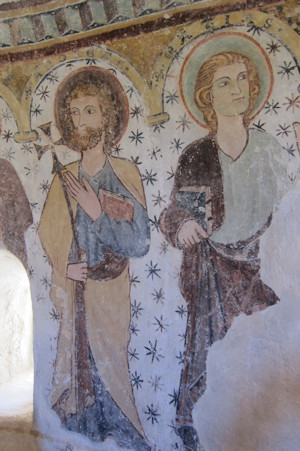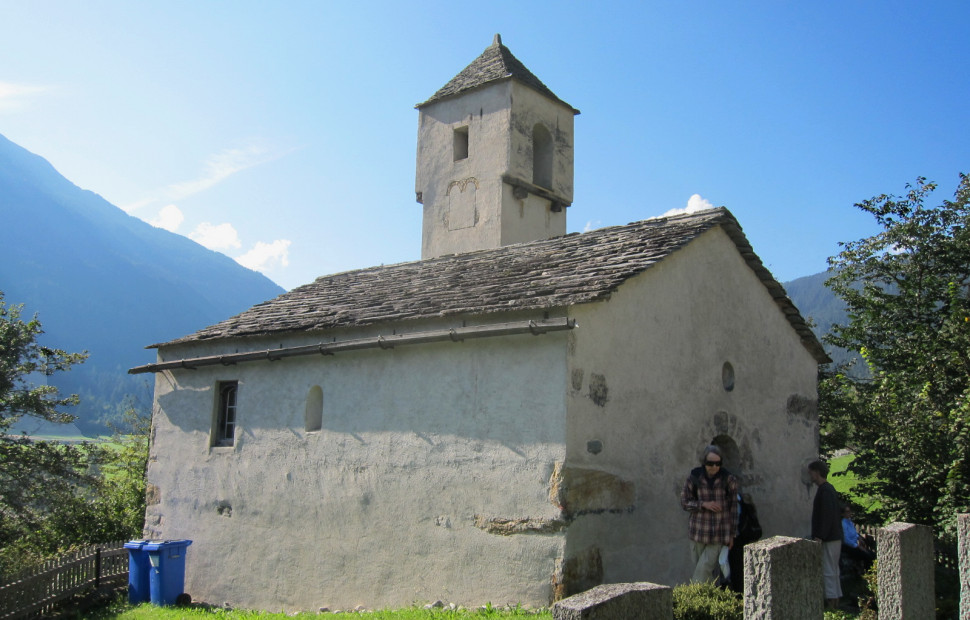The small Romanesque church in Clugin in the Rhine valley in Graubünden was probably built between 1150 and 1200. The rectangular nave and the round apse are typical of the Romanesque style. The church tower, whose windows were later bricked up from the oldest building fabric, fits idiosyncratically into the façade between the nave and the choir in the south.

The interior of the church is adorned with murals by both the famous Waltensburg Master and the Rhäzünser Master who came two generations later. In the apse the twelve apostles, above them in the calotte Majestas Domini with the evangelist symbols; illusionistic profiling of the apse arch as in St. George in Rhäzüns; to the left of the apse under a crenellated frieze the Annunciation angel and St. Bishop; on the north nave wall two martyrs and a preliminary drawing of a Christophorus figure. 2nd Rhäzüns Master around 1400: on the N wall preliminary drawing of an epiphany (partially destroyed by the Baroque window), on the south nave wall St. George and crucifixion group.

Thomas, our pastoral assistant, explains the frescoes to us.

Two apostles
